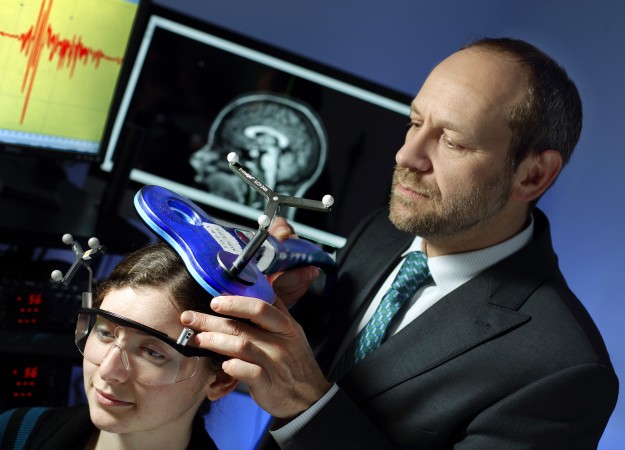By Pablo Celnik, M.D.
Stroke is the third-leading cause of disability worldwide and a major cause of dementia and depression, according to the World Health Organization. Recovery from a stroke can take months or years, depending on the patient’s loss of functions. So my team from the Center of Excellence in Stroke Treatment, Recovery and Rehabilitation and professionals from the Physical Medicine and Rehabilitation Department set out to design new ways to help people recover from stroke and other brain diseases.
Our efforts led us to create the Noninvasive Brain Stimulation (NIBS) Program, in which we combine NIBS with high-intensity rehabilitation exercises as part of a comprehensive, three-week program to facilitate recovery.
NIBS helps rehabilitation by stimulating the damaged area of the brain to restore lost function, as well as a different area to compensate for the loss of a function. Brain stimulation facilitates brain plasticity and brain recovery, but it needs to be done while the patient is doing exercises for language, cognition, movement or perception.
NIBS has been shown to be a safe, painless way to improve post-stroke problems with speaking, swallowing, movement, cognition and other functions. And it has minimal side effects. However, few centers provide noninvasive brain stimulation, and when they do use it, it’s outside the context of rehabilitation.
Through our program, we’re trying to amplify the results of rehab to minimize the effects of stroke and other neurological conditions. Not only does this program make Johns Hopkins unique, it helps us give hope to the majority of stroke patients who otherwise would go through rehab, but never really return to normal.
A version of this story first appeared in Leader, a magazine that connects the leaders of the world with Johns Hopkins Medicine, a global leader in medicine.
Pablo Celnik, M.D., is director of the Johns Hopkins Department of Physical Medicine and Rehabilitation and physiatrist-in-chief at The Johns Hopkins Hospital. He is a professor of physical medicine and rehabilitation, neurology and neuroscience at the Johns Hopkins University School of Medicine. He is internationally recognized for his expertise and research in neurologic rehabilitation, particularly with stroke and traumatic brain injury.
